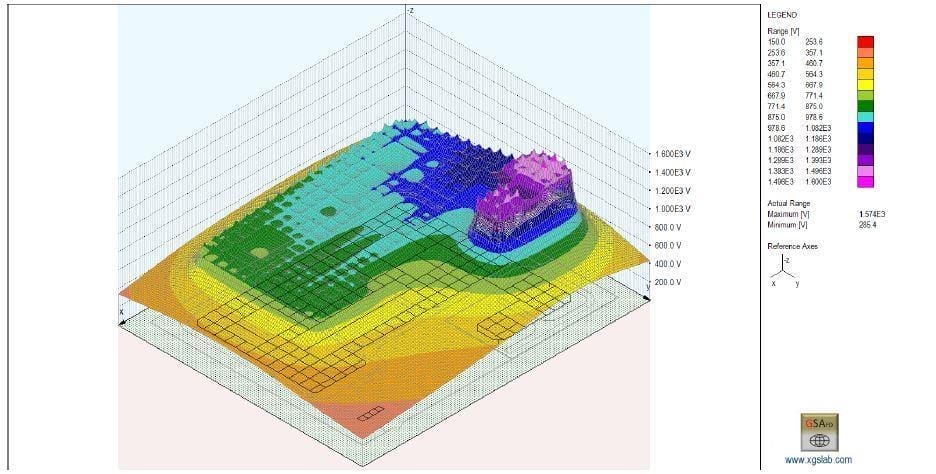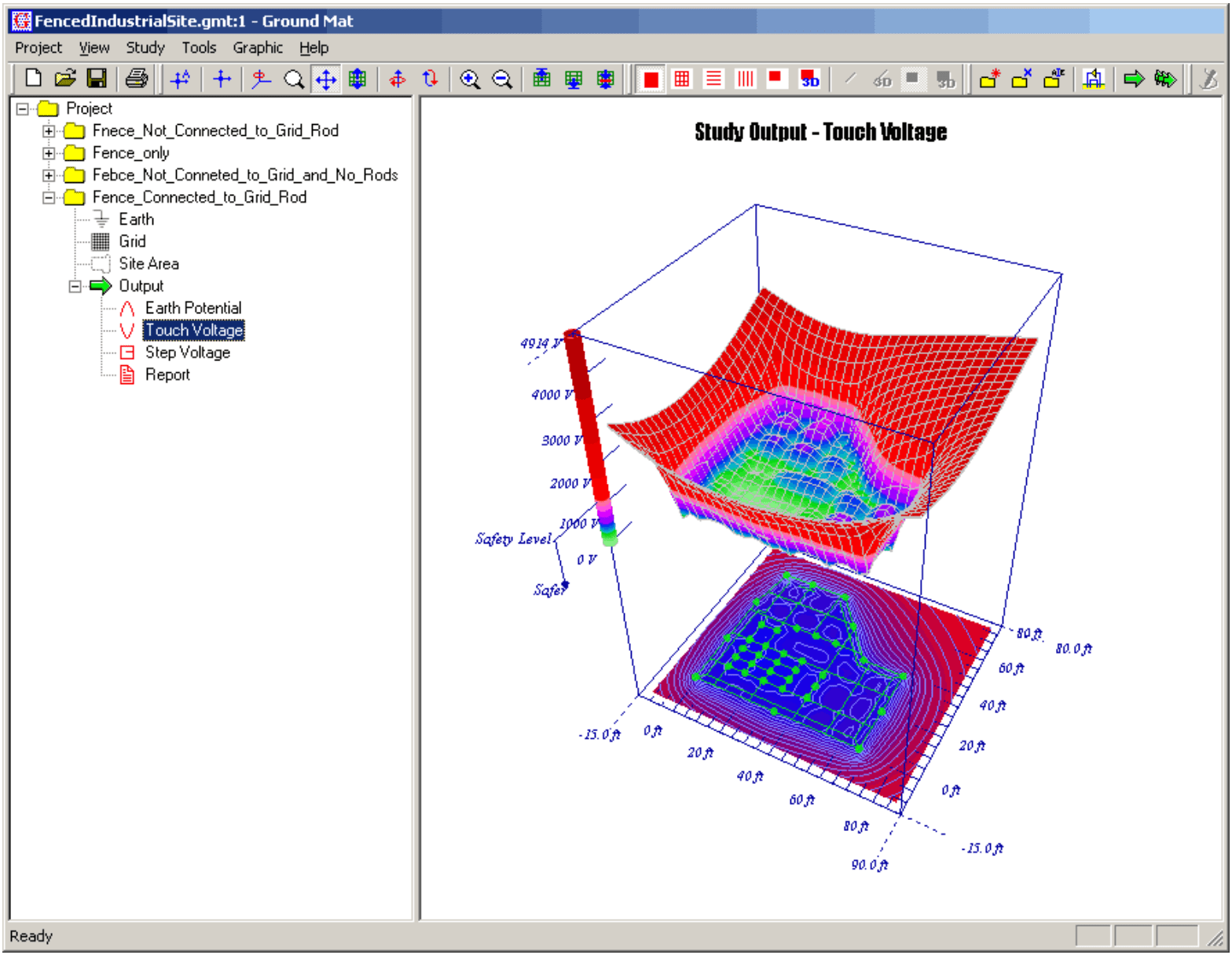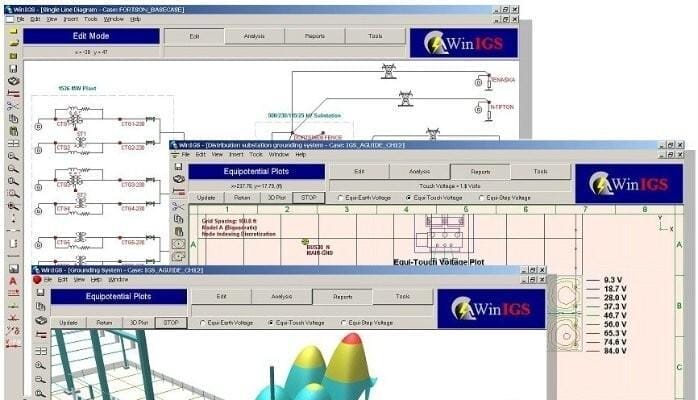Table of Contents
One of the most revered topics in electrical engineering is electrical earthing. Traditionally electrical earthing systems design has been a specialised field with topic experts and dedicated departments within organisations who are responsible. This has partly been because electrical earthing is both complicated requiring effort to understand and also because it is related to safety.
In the past, electrical earthing was regarded by many electrical engineers as a “black-art”. Nowadays with greater numbers of mentors, increased online education and powerful, intuitive software being available (and at a much lower cost to market than was previously being offered), the capability of designing safe and robust earthing systems is more readily available for electrical engineers.
This technical article will reveal and compare seven (7) of the world’s most well-known software packages for the modelling and for the design of electrical earthing systems.
What is an Earthing System?

An earthing system (UK and IEC) or grounding system (US) connects an electrical power system with the earth’s conductive surface, for both safety and functional purposes. The earthing system must be carefully designed since it will affect safety and the electromagnetic compatibility of an installation. In addition to electrical power systems, earthing may be required for other systems such as for lightning protection systems.
In terms of safety for humans, assuming an earthing system is designed properly there are significant safeguards and improvements to safety it can provide. Electrical fault currents which are potentially fatal to humans in the form of touch or step voltage hazards are captured by an earthing system and safely directed to and dissipated into the ground.
Designing of an earthing system can be a complicated process and requires both a careful and considered as well as a practical and an analytical approach. As we’ll explore below, it can become difficult to keep track of many different equations, and for this purpose the usage of software has become much more popular.
When should you perform an Earthing Study?
- An audit or inspection uncovers defective or damaged earthing.
- Measurements of grid resistance unveils a result which exceeds the design value.
- Modifications or upgrades/extensions to an existing site.
- Changes in the power system affecting fault level or clearing times.
Why use Earthing Design Software?
- Design safe and economical (reduced overdesign) earthing systems.
- Easily make changes to a design to analyse the effects and optimise it.
- Include the power system model and investigate multiple fault scenarios.
- Accurately model your actual site conditions.
- To use accurate numerical software algorithms.
- For compliance with the latest safety standards.
- Perform difficult calculations in short amounts of time.
- Visualise touch and step voltage plots.
7 Best Earthing & Grounding Software Packages
1. ELEK SafeGrid
SafeGrid is a well-known and a complete earthing design software package which has been in the market since 2009. It is one of the few packages world-wide which has multilayer soil modelling capability making it much more accurate than software which can model up to 2 soil layers only.
SafeGrid’s main algorithm considers the complex and frequency-dependent series impedance of the grid conductors and is equivalent with the CDEGS MALZ software. Click to view a comparison of the results between SafeGrid and CDEGS software.
Note that earthing software that neglects voltage drops in grid conductors can dramatically underestimate earthing requirements near high voltage equipment and overestimate grounding requirements everywhere else.
There is expert technical support provided by Electrotechnik. There is an online training course available, and online step-by-step tutorials provided.
Things we like the most:
- SafeGrid is the easiest to use. The design process is so simple.
- Multilayer FEM algorithm is powerful and has high-precision.
- Algorithm that accounts for the impedance of grid conductors which is much more accurate and leads to improved safety and reduced construction costs.
- Below and above ground arbitrary earthing systems from DC up to high frequency.
- Steady-state (sinusoidal) and transient (time-domain) waveforms analysis included with the Professional edition.
- Automatic soil modelling from field measurements.
- Fault current distribution module with standard cases.
- Model custom grids from AutoCAD files.
- Both IEC, BS and IEEE safety standards.
- Interactive and modern plotting with reports in PDF or Microsoft Word.
- Tool to overlay voltage plots onto your site construction drawings.
- Rolling sphere method module for lightning protection designs.
- Metric and Imperial units support.
- Extremely powerful, easy to use and excellent value for money.
Things we don’t like:
- No module for metallic pipeline induced voltage studies – under development due 2023.
- Cannot model finite volume or vertically stratified soils.
- Wenner arrays supported only and not Schlumberger arrays – Schlumberger due 2023.
- No magnetic or electric fields outputs at present.
Pricing for SafeGrid packages:
- Standard version: $9,900
- Professional version: $15,000
The Professional version can model an unlimited number of conductors (15,000+) up to 10 MHz in the frequency-domain and also includes time-domain (transient) calculations.
Each licence can be used by two (2) users.
1 year of updates and support is included. After 1 year the cost is 20%.
A free trial is available for download.
Review and Rating - ELEK SafeGrid
Technical Support
Value for Money
- Pros:
Multilayer soil modelling for custom grids in 3D. Advanced algorithm suitable for high-frequencies and considers series voltage drops on grid conductors. Several modules included as standard such as fault current distribution and lightning protection. Transient time-domain calculations available.
Modern interface and extremely easy-to-use. Training is usually not required but courses are available. Advanced reporting features. Two (2) users per licence.
- Cons:
Metallic pipeline induced voltages module (due Q4, 2023) and finite volume soil structures not currently available.
2. SES CDEGS Suite

SES Technologies is a Canadian based company which offers the well-known CDEGS Suite software package combining both earthing and electromagnetic analysis into one program. The software includes accurate circuit analysis calculations that work in tandem with earthing calculations and helps greatly in analysing electromagnetic related problems often encountered in electrical systems. There are many different packages offered by SES for earthing design where CDEGS is the highest package which includes all the capabilities of all of them.
The main packages offered by SES Tech includes:
AutoGround – The most basic earthing design package limited to 2-layer soil modelling and equipotential grid assumption which offers acceptable accuracy for small grids. Wenner and Schlumberger array measurements but interestingly can give multilayer model however AutoGround can still only model up to 2 soil layers only.
MultiGround – Multilayer soil modelling ability, still with the assumption of equipotential grid conductors. Finite soil volumes and vertically as well as horizontally stratified soil models. Includes fault current distribution.
MultiGroundZ – The same features as MultiGround but also considers the complex impedance of the grid conductors which is much more accurate.
Multifields – This package can solve electromagnetic problems involving a network of above ground and below ground conductors. Transients can be analysed up to hundreds of megahertz.
CDEGS – This is the complete suite of SES software for solving earthing, electromagnetic interference, electromagnetic fields, and transient phenomena.
Things we like most:
- The full CDEGS package covers the broadest range of earthing and electromagnetic applications for power systems.
- The most widely known and accepted software package.
- Interactive 3D CAD module which is best in class.
- Can model the highest number of different soil structures.
Things we don’t like:
- Difficult and complicated software to use.
- Very expensive for features offered as standard by other vendors.
- Many of the packages and capabilities are not necessary for earthing designs. For example, electromagnetic interference, electromagnetic fields, and transient phenomena will not be required for most projects.
- Highly academic software as opposed to practical in its approach to earthing design.
- Their base packages of AutoGround and MultiGround (without Z+) exclude critical features and have very limited capabilities for the price.
Pricing for CDEGS packages:
- AutoGround version: ~$14,000
- MultiGround version: ~$27,000
- MultiGroundZ+ version: ~$54,000
- MultiFields+ version: ~$90,000
- CDEGS version: ~$105,000
The + versions of these packages and CDEGS include SPLITS which is their fault current distribution package and SESShield which is for lightning protection design.
A free trial is not available at the SES website for download.
Review and Rating - CDEGS
Technical Support
Value for Money
- Pros:
The most well-known and respected earthing and grounding modelling software package. Multi-layer soil modelling as well as finite volumes and vertically stratified. Multiple add-on modules.
- Cons:
Extremely costly. Some other packages (such as SafeGrid and XGSLab) have the same capabilities for much lower cost. CDEGS software to difficult software to use – requires expensive training courses. There are a lot of features which most users do not need and would never use.
3. SINT XGSLab

SINT (Italy based) has developed the XGSLab Suite, which includes several modules to assist with grid analysis, incorporating low frequency analysis of grounding systems and soil calculations. It can take input data from graphical files (such as AutoCAD .dxf files) or numerical files, ensuring that it can do calculations from all sorts of data.
XGSLab has several different modules to choose from:
GSA (Grounding System Analysis) for all basic application with underground systems with equipotential grid voltages assumed.
GSA_FD (Grounding System Analysis in the Frequency Domain) for general applications with underground systems.
XGSA_FD (Over and Under Grounding System Analysis in the Frequency Domain) for general applications with overhead and underground systems
XGSA_TD (Over and Under Grounding System Analysis in the Time Domain) for general applications with overhead and underground systems in the time domain.
Addon packages include:
NETS is the fault current distribution module.
SHIELD is the lightning protection design module which uses the rolling sphere method.
Things we like most:
- Multilayer soil modelling for all packages.
- Accounts for the impedance of grid conductors (GSA_FD and above).
- Below and above ground arbitrary earthing systems from DC up to high frequency.
- Model custom grids from AutoCAD files.
- Both IEC and IEEE safety standards.
- Metallic pipeline induction studies, magnetic fields, and electric fields capabilities.
- Time domain (transient) studies are possible (if required) with top package.
- Lightning protection design module SHIELD is in 3D.
Things we don’t like:
- Relatively steep learning curve to use the software.
- Sold through resellers therefore the technical support may not be good.
- Fault current distribution (NETS) and lightning protection modules are optional extras (add-ons).
- Above ground earthing with Frequency-domain (FD) and Time-domain (TD) calculations modules are expensive.
Pricing for XGSLab packages:
- GSA Standard: Contact SINT (or reseller).
- GSA_FD Standard: $19,780 (2021)
- GSA_FD Professional: $24,663 (2021)
- XGSA_FD Standard: ~$35,000
- XGSA_TD Standard: ~$45,000
- NETS: ~$7,000
- SHIELD: Contact SINT (or reseller).
“Standard” means you can model up to 5,000 elements (conductors). “Professional” means you can model up to 15,000 elements (conductors).
1 year of support is included.
SINT offers affordable after sales web training via their resellers.
A virtual trial is available via resellers of XGSLab.
Review and Rating - XGSLab
Technical Support
Value for Money
- Pros:
Multilayer soil modelling like SafeGrid and CDEGS. A good level of features and capabilities. Well known and respected internationally. Affordable after sales training is available.
- Cons:
Relatively difficult to use and high prices for standard capabilities. Add-ons for fault current distribution (NETS) and lightning protection (SHIELD) cost extra. Technical support provided by a reseller network and not SINT (Italy) directly.
4. ETAP Ground Grid Systems

ETAP is a package covering many areas of electrical power systems design and is well-known. ETAP has developed the Ground Grid Systems (GGS) software to assist in designing ground grid systems.
Things we like most:
- Can model grids of any shape.
- 3D analysis of voltages.
- User-definable conductor library.
- Soil modelling using the Wenner method.
- Calculation of safe limits to the IEEE standard.
- Direct exportation of calculations and data to PDF.
Things we don’t like:
- Basic package and quite dated.
- Algorithm assumes equipotential grid.
- Limited to 2-layer soil models.
- No IEC safety standards.
Pricing for ETAP GGS:
- Contact ETAP for pricing information.
Review and Rating - ETAP Ground Grid Systems
Technical Support
Value for Money
- Pros:
ETAP is well-known and supported software and widely used for power system analysis. Useful package for analysing simple grids of any shape. Up to two soil layers with soil modelling and IEEE safety standards.
- Cons:
Very basic in terms of features and dated software interface. Main algorithm is flawed in that it assumes equipotential grid segment voltages leading to large errors. IEC and EN safety standards not supported. May not be able to purchase the grounding software separately from the entire ETAP suite. Only deals with two layer soils.
5. SKM GroundMat

SKM has developed the GroundMat software with the purpose of substation ground grid design and analysis. GroundMat specialises in the optimisation of pre-existing grid designs, or reinforcing pre-existing grids, regardless of shape. With the usage of a finite element algorithm, it can validate ground system efficiency with ease.
Things we like:
- Uniform/two-layer soil layer analysis.
- Multiple conductor sizes and material types, with sizing to IEEE standard 80.
- Soil modelling using the Wenner method.
- Calculation of safe limits to IEEE standards.
- Interactive 2D and 3D plots.
Things we don’t like:
- Basic package and quite dated.
- Algorithm assumes equipotential grid.
- Limited to 2-layer soil models.
- No IEC safety standards.
Pricing for GroundMat:
- Single User: $3995
- Local Area Network: $5495
Review and Rating - SKM GroundMat
Technical Support
Value for Money
- Pros:
SKM is well-known and supported software and widely used for power system analysis. Useful package for analysing simple grids of any shape. Up to two soil layers with soil modelling and IEEE safety standards.
- Cons:
Very basic in terms of features and dated software interface. Main algorithm is flawed in that it assumes equipotential grid segment voltages leading to large errors. IEC and EN safety standards not supported. Not suitable for large or complex grids. Not supported by grounding experts. Only deals with two layer soils.
6. EATON CYMGRD

EATON has developed the CYMGRD software as a means of substation grounding design and analysis, seeking to make not only the design of new grids easier, but to reinforce existing grids to be as efficient and cost effective as possible. With user-friendly data entry and efficient analysis algorithms, the CYMGRD software makes arriving at cost-effective solutions easy.
The CYMGRD software offers the following features:
- Uniform and two-layer soil analysis
- Conductor sizing to IEEE standard 80
- Soil modelling using the Wenner method
- Calculation of limits to the IEEE standard
- Interactive 2D and 3D plots showing step voltages, touch voltages, etc
- Inclusion of typical soil resistivity values and common types of surface layer materials
Pricing of CYMGRD:
- Contact EATON for pricing.
7. APC WinIGS

The Advanced Power Concepts (APC) Integrated Grounding System Analysis for Windows (WinIGS) is a software that performs analysis and design of one or more grounding systems in an electrical power system. It allows the user to analyse the performance under steady state, transient and fault conditions and to evaluate this performance as per several industry-standard criteria.
The WinIGS software offers the following features:
- Uniform and two-layer soil analysis.
- Multiple conductor sizes and material types and sizing to IEEE standard 80.
- Soil modelling using the Wenner method.
- Analysis of the distribution of fault currents in power systems.
- Calculation of safe limits to both IEEE standards.
- Power system above ground networks.
- Lightning protection calculations in 3D using the rolling sphere method
- Direct exportation of calculations results.
Pricing of WinIGS:
- Contact APC for pricing.









